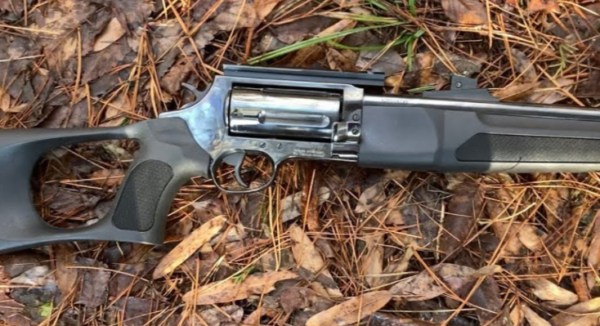Hi dear visitor welcome to our blog.
Remington SP10 is one of the best brands in the world of guns.
But some people face problems with this model.
In this guide, we explain 10 common problems of this model with unique solutions. So let’s start now.
Remington SP10 Problems

The Remington SP10, while generally reliable, can present a few issues. Some users have reported difficulties with the shotgun’s ejection mechanism, leading to occasional jamming.
Besides, the gun’s weight can be challenging for some users during extended use. Finally, certain models have been known to have issues with gas system reliability, which could affect performance.
It’s important to seek professional advice or assistance when encountering these problems.
1. Failing Ejection Mechanism


Cause
The primary reason behind a failing ejection mechanism in the Remington SP10 typically lies in weakened or worn-out ejector springs.
Continual use and the passage of time can lead to this issue, leading to a failure in properly ejecting shells.
The ejector springs are vital components that should maintain their tension for the shotgun to operate effectively.
Solution
The most reliable solution to this problem is to replace the faulty ejector springs. It is advisable to procure high-quality springs from a trusted supplier for this purpose.
Regular maintenance and cleaning of the shotgun can also prevent such issues from arising.
Replacement of springs is a straightforward procedure, but if you’re unsure, professional assistance is recommended.
Regular care and maintenance ensure the longevity of your Remington SP10.
2. Trigger Group Malfunction
Cause
The cause of a trigger group malfunction can be attributed to several factors. Commonly, it is due to poor maintenance, improper handling, or the use of bad ammunition.
Over time, dust and debris can accumulate and compromise the functionality of the trigger group.
Similarly, inappropriate handling can lead to unnecessary wear and tear, while bad-quality ammunition can cause jams and other issues.
Solution
Addressing a trigger group malfunction primarily involves a thorough cleaning and inspection of the firearm.
Regular maintenance, including correct cleaning and lubrication, can prevent many malfunctions.
If the problem persists, it may be due to damaged parts that need to be replaced. In such cases, consulting a professional gunsmith is recommended, ensuring the work is done correctly and safely.
3. Uneven Barrel Wear
Cause
Uneven barrel wear is typically caused by a combination of factors including improper cleaning, irregular maintenance, excessive use of high-pressure rounds, or simply the natural aging process of the firearm.
Particularly, neglecting regular cleaning and maintenance can lead to the accumulation of debris or corrosion in the barrel, accelerating wear.
Solution
The solution to uneven barrel wear primarily revolves around regular and thorough cleaning, along with timely maintenance.
Using cleaning rods and brushes designed specifically for your firearm’s caliber and barrel length can effectively remove debris and prevent wear.
Further, consider using standard-pressure rounds to lessen the strain on your firearm.
For aged firearms displaying significant wear, consulting a professional for potential re-barreling could be an option.
4. Bolt Assembly Issues
Cause
The principal cause of bolt assembly issues typically stems from improper installation, such as incorrect torque application, cross-threading, or the use of incompatible components.
Specifically, excessive torque can lead to bolt failure, while inadequate torque may cause loosening.
Cross-threading can damage the bolt and the component it secures, compromising the assembly’s strength.
Solution
The solution to bolt assembly issues lies in adhering strictly to manufacturer guidelines during installation.
This includes using the appropriate tools and ensuring correct torque application.
Always verify the compatibility of bolts and components and consider professional advice if uncertain.
5. Stock Damage
Cause
The primary causes of stock damage can range from improper handling and poor storage conditions to natural disasters or accidents.
Poorly trained staff often mishandle goods leading to breakages or spoilage.
Inappropriate storage conditions such as excessive humidity or temperature fluctuations can deteriorate certain commodities.
Lastly, unforeseen events like fires, floods, or other accidents can cause significant stock damage.
Solution
To mitigate stock damage, it is essential to implement effective inventory management and employee training.
Investing in proper staff training ensures the correct handling and storage of goods, reducing the risk of damage.
Optimizing storage conditions according to the nature of goods prevents spoilage or degradation.
6. Misfires Due to Firing Pin Problems
Cause
Misfires can commonly be attributed to issues with the firing pin, a vital component of a firearm.
The firing pin strikes the primer located in the cartridge, igniting the gunpowder and causing the bullet to fire.
If the firing pin is damaged or worn, it may not strike the primer effectively, resulting in a misfire.
A defective firing pin can render the firearm unreliable, jeopardizing user safety. Regular inspection and maintenance are necessary to prevent such issues.
Solution
Resolving firing pin-related misfires primarily involves the replacement or repair of the pin. It’s crucial to choose a high-quality, durable replacement to ensure long-term performance.
In some cases, a professional gunsmith can rectify minor defects through careful filing and polishing.
Always remember, working with firearms demands a high level of precision. Therefore, seeking professional help is highly recommended when dealing with firing pin problems.
7. Magazine Tube Complications
Cause
Magazine tube complications in firearms often arise due to issues such as improper cleaning, using incompatible ammunition, or wear and tear over time.
These complications can severely impact the firearm’s functionality and reliability, potentially leading to dangerous situations if not addressed promptly.
Solution
To mitigate magazine tube complications, it is paramount to engage in regular and thorough cleaning of the magazine tube using the correct tools and solvents.
Besides, ensure that the ammunition used is compatible with your specific firearm.
In case of persistent issues, seek professional help or consider replacing the worn-out components. Regular maintenance and checks play a crucial role in preventing such complications.
8. Recoil Pad Deterioration
Cause
Prolonged exposure to harsh environmental conditions, direct sunlight, and improper storage are the primary causes of recoil pad deterioration.
Plasticizers in the pad evaporate over time, leading to hardening and cracking. Frequent usage and neglect may also contribute to accelerated wear and tear.
Solution
The best solution lies in proper maintenance and storage. Always clean the recoil pad after use and store it in a cool, dry place away from direct sunlight.
Occasionally applying a silicone spray can help maintain the pad’s flexibility and longevity.
9. Sight Alignment Difficulties
Cause
The root cause of sight alignment difficulties often lies in improper firearm handling or lack of understanding of your sight mechanism.
It might be due to unstable holding, inconsistent eye relief, or not getting a clear sight picture. Inconsistency in positioning and aiming can significantly affect sight alignment, leading to inaccurate shots.
Solution
Addressing sight alignment issues primarily involves practicing proper handling and sighting techniques.
Start with a stable shooting stance and ensure consistent eye relief with each shot. Understand the sight mechanism of your firearm and practice focusing on both the target and the sight.
10. Gas System Troubles
Cause
Faulty gas systems can be attributed to a variety of factors. Common causes include worn-out parts, improper installation, or lack of regular maintenance.
Over time, these issues can lead to decreased efficiency and potential safety hazards. Regular checks and maintenance are key to identifying and addressing any potential issues early on.
Solution
The solution to gas system troubles begins with regular inspection and maintenance. This ensures immediate identification and rectification of any issues.
If a problem is detected, prompt professional intervention is critical. Never attempt to fix gas system troubles on your own, it’s always safer and more efficient to rely on trained professionals.
Timely professional intervention can ensure the longevity of your system and safeguard against potential hazards.
11. Fails to Feed
Cause
“Fails to feed” is a common issue in gas systems, primarily caused by obstructions in the delivery line or the use of low-quality fuel.
Blockages can disrupt the smooth flow of gas, preventing it from reaching the desired location.
Similarly, inferior fuel can lead to sediment build-up within the system, impeding normal operation. It’s crucial to use quality fuel and ensure a clear, obstruction-free delivery line.
Solution
The solution to this issue lies in regular professional cleaning and the use of high-quality gas. Professional cleaning ensures the removal of any potential blockages, ensuring an unhindered gas flow.
Further, using high-quality fuel can prevent the formation of sediment within the system. In case of persistent issues, consider a comprehensive system check or replacement.
Conclusion
Navigating through the complex web of information that our modern world provides mandates an informed, judicious approach.
We must choose wisely, leveraging the right tools and resources at our disposal to decipher truth from misinformation.
As we journey forward, let us keep our minds open, never ceasing to question and evaluate, thus laying a solid foundation for an environment based on trust, transparency, and accountability.
FAQs
When did Remington stop making the SP 10?
Remington ceased production of the SP 10 in 2011.
What is the capacity of the Remington SP 10?
The Remington SP 10 shotgun has a capacity of 2 shells.
What is the best auto shotgun ever made?
This can be subjective, but the Benelli M4 is often hailed as one of the best auto shotguns.
Remington Sportsman 58 Problems
Remington 760 Gamemaster Problems


As the founder and owner of the domain “mygunsgeek.com”, I bring to the table a deep passion for firearms, combined with a strong commitment to sharing this knowledge with a wider audience. With years of experience exploring the inner workings of various firearms, from pistols to rifles, I have cultivated a vast expertise in this field. This has enabled me to create a platform that serves as a trusted resource for gun enthusiasts, providing comprehensive reviews, advice, and insights into the latest trends and advancements. I am dedicated to ensuring that my content is both informative and engaging, helping my readers make informed decisions about their firearm choices. For any inquiries or suggestions, feel free to reach out to me at wwwfffwww117@gmail.com. Your feedback is invaluable in shaping the content and direction of mygunsgeek.com.


